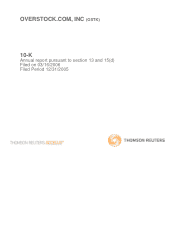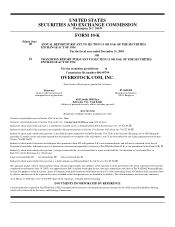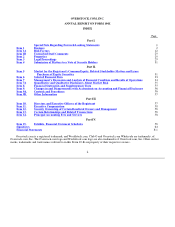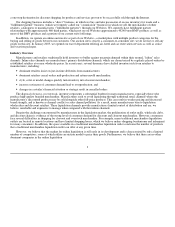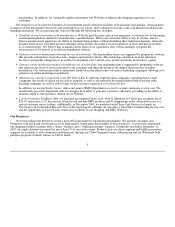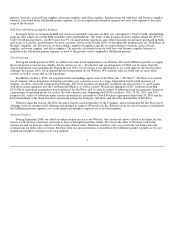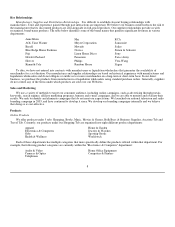Overstock.com 2005 Annual Report Download - page 6
Download and view the complete annual report
Please find page 6 of the 2005 Overstock.com annual report below. You can navigate through the pages in the report by either clicking on the pages listed below, or by using the keyword search tool below to find specific information within the annual report.
a one-stop destination for discount shopping for products and services proven to be successfully sold through the Internet.
Our shopping business includes a "direct" business, in which we buy and take possession of excess inventory for resale and a
"fulfillment partner" business (which we formerly called our "commission" business) in which we sell the merchandise of other
retailers, cataloguers or manufacturers ("fulfillment partners") through our Websites. We currently have fulfillment partner
relationships with approximately 460 third parties, which post on our Websites approximately 48,000 non-BMV products as well as
most of the BMV products and a portion of our current travel offerings.
In addition, we operate an online auction site as part of our Website—a marketplace with multiple product categories for the
buying and selling of goods between our customers. Our auction site is strictly a consumer-to-consumer site; we do not list or sell any
goods on this site. In January 2005, we opened our travel department offering air, hotel and car reservation services as well as cruise
and vacation packages.
Industry Overview
Manufacturers and retailers traditionally hold inventory to buffer against uncertain demand within their normal, "inline" sales
channels. Inline sales channels are manufacturers' primary distribution channels, which are characterized by regularly placed orders by
established retailers at or near wholesale prices. In recent years, several dynamics have shifted inventory risk from retailers to
manufacturers, including:
• dominant retailers insist on just-in-time deliveries from manufacturers;
• dominant retailers cancel orders mid-production and return unsold merchandise;
• style, color or model changes quickly turn inventory into closeout merchandise;
• incorrect estimates of consumer demand lead to overproduction; and
• changes in a retailer's financial situation or strategy result in cancelled orders.
The disposal of excess, or overstock, inventory represents a substantial burden for many manufacturers, especially those who
produce high-quality branded merchandise. Manufacturers seek to avoid liquidating through traditional retail channels where the
manufacturer's discounted products may be sold alongside other full-price products. This can result in weaker pricing and decreased
brand strength, and is known as channel conflict or sales channel pollution. As a result, many manufacturers turn to liquidation
wholesalers and discount retailers. These liquidation channels provide manufacturers limited control of distribution and are, we
believe, unreliable and expensive to manage when compared with their inline channels.
Despite the challenges encountered by manufacturers in the liquidation market, the proliferation of outlet malls, wholesale clubs,
and discount chains is evidence of the strong level of consumer demand for discount and closeout merchandise. However, consumers
face several difficulties in shopping for closeout and overstock merchandise. For example, many traditional merchandise liquidation
outlets are located in remote locations and have limited shopping hours, which we believe makes shopping burdensome and infrequent
for many consumers. In addition, the space available in a traditional merchandise liquidation outlet constrains the number of products
that a traditional merchandise liquidation outlet can offer at any given time.
However, we believe that the market for online liquidation is still early in its development and is characterized by only a limited
number of competitors, some of which utilize an auction model to price their goods. Furthermore, we believe that there are no other
dominant companies in the online liquidation
3

